Rene Magritte What Teachers Taught Him at Royal Academy of Fine Arts of Brussels
1903–1966
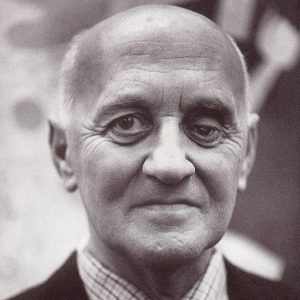 Born in 1903 in Romania, Victor Brauner was the elder gooper of the Surrealist photographer Théodore Brauner. Beingness a student at the Bucharest Fine Art School during 1919–1921, Victor Brauner was an early participant in the buzzing art scene of the time.
Born in 1903 in Romania, Victor Brauner was the elder gooper of the Surrealist photographer Théodore Brauner. Beingness a student at the Bucharest Fine Art School during 1919–1921, Victor Brauner was an early participant in the buzzing art scene of the time.
At the occasion of the start exhibition of his works in Bucharest in 1924, Brauner co-edited with the poet Ilarie Voronco an edition of the Dada magazine, entitled 75 HP (Equus caballusprisoner of warer), in which he published his so-called 'picto-poetry' homoifesto. His juxtaposition of letters, images and colours created visual poems influenced past the contemporary researches of Futurism, Dada and Constructivism.
During his first visinformation technology to Paris in 1925, Brauner discovered Surrealism. He joined the movement immediately when he gear uptled in the French capital in 1932. Brauner was particularly close to the painter Yves Tanguy. Brauner contributed to the Surrealist display at the 6th edition of the 'Salon des Surindépendants' in 1933. The foldepressioning year, the Pierre gallery hosted his get-go ane-human being prove, for which André Breton wrote the preface of the catalogue.
In 1935 Brauner returned to Bucharest for three years. Upon his return to Paris Brauner participated in the 1938 and 1939 editions of the 'Salon des Surindépendants' with a series entitled 'Chimères'. As a communist Jew, Brauner was forced to choose exile in the Due south of French republic during the Vichy dominion of Nazi occupied France. Towards the end of the Second Globe War, Brauner went into full hiding and worked on a serial of wax drawings and experimented with sculpture; the lack of available materials pushed him to improvise and introduce.
In 1947, Brauner participated in the International Surrealist Exhibition held at the Maeght gallery, where he showed 'Loup-Table', ane of his best-know works. Brauner's individualism however pushed the Surrealists to exclude him from the group in 1948. Brauner continued to develop his enquiry into a new pictorial language which revealed the illusory.
Brauner left French republic for Switzerland where he succumbed to a long illness in March 1966. He was cached at the Montmartre Cemetery in Paris. In 1996, the Centre Georges Pompidou hosted an important retrospective to this major figure of Surrealism, costless inventor and indepenparing spirit. In 2020 the 'Musée d'Art Moderne de Paris' hosted a one-homo show entitled Victor Brauner. Je suis le rêve. Je suis fifty'inspiration.
1897–1994
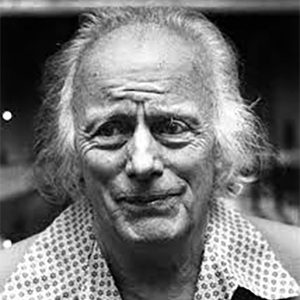 Built-in in Belgium into a bourgeois family, Paul Delvaux offseted training as an architect at the Royal Acadeastwardmy of Fine Arts in Brussels in 1916.
Built-in in Belgium into a bourgeois family, Paul Delvaux offseted training as an architect at the Royal Acadeastwardmy of Fine Arts in Brussels in 1916.
Soon, Delvaux turned to painting which he explored under the influence of his teacher, master of Symbolism Jean Delville; he also met René Magritte, with whom he chieftained a friendly relationship throughout his lifetime. During the 1920s, Delvaux worked in a style which can be defined as a Mail-Impressionist interpretation of Expressionism. During the late 1920s his works featured nudes in landscapes heavily influenced by the 2 major exponents of Flemish Expressionism Constant Permeke and Gustave De Smet. In his quest for perfection, Delvaux was ofttimes dissatisfied and destroyed many of these paintings.
During 1933, Delvaux netherwent a change of style, reverberateing the influence of the Metaphysical Painting of Giorgio de Chirico, whose work he was enlightened of since 1927. When he saw de Chirico's work at the Surrealist exhibition held at the legendary gallery 'Le Minotaure' in 1934, Delvaux decided to 'paint poetry' and adhered to Surrealism. The works 'Palais en ruine' and 'Le Rêve', both dated 1935, are considered his starting time Surrealist works. His series 'Femmes en dentelle' confirmed his chosen direction. Without ever officially belonging to the Surrealist movement, Paul Delvaux is considered one of its major figures. In 1938, his works were presented in Paris at the landmark 'Exposition Internationale du Surréalisme' organised by André Breton and Paul Éluard. Whereas his compatriot René Magritte depicted ideas, Delvaux remained singular in his fondness for narration and the theatrical, hallmarks of Symbolism.
His works depict antiquarian ruins, imaginary architectural constructions or contemporary city structures against deserted and mysterious landscapes haunted by inaccessible female figures.
The skeletons he saw at the Brussels Museum of Natural History made an appearance in many of his paintings and contributed to create a strange and fantastic universe.
During the 1930s Delvaux was commissioned large murals for the Ostend Casino and for the 'Palais des Congrès' in Brussels, which earned him great respect. In 1956 Delvaux represented Belgium at the 27th Venice Biennale where his scenes of the 'Passion of Christ', populated with skeletons, acquired a scandal; in 1961, the 'Musée des Beaux-Arts' of Lille hosted his kickoff retrospective ; in 1975, a large retrospective was held in his honour at the Tokyo National Museum of Modernisticern Art. In 1982 the Paul Delvaux Museum opened Saint-Idesbaldheaded on the Belgian Coast. Delvaux died in Saint-Idesbaldheaded in 1994.
1881–1955
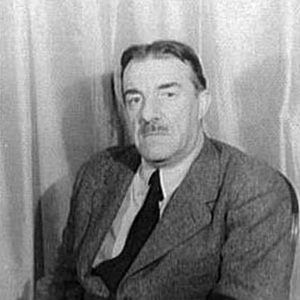 Born in 1881 in Argentan, Due north West France, Fernand Léger, who would later carry the sobriquet of 'peasant of the avant-garde' decided to study architecture. However, at his arrival in Paris in 1900, he changed direction in favour of painting. Having failed the entry examination of the 'École des Beaux-Arts' Léger frequented several artists' studios whilst concentrating on depicting. Having settled in Montparnasse, the cradle of Modern Fine art, Léger befriended the painters Robert Delaunay and Marc Chagall, likewise as the poets Blaise Cendrars, Guillaume Apollinaire and Max Jacob. The young Léger adhered to Mail service-Impressionism. Every bit his style developed dramatically during 1902–1908 Matisse gradually destroyed nearly of this early production.
Born in 1881 in Argentan, Due north West France, Fernand Léger, who would later carry the sobriquet of 'peasant of the avant-garde' decided to study architecture. However, at his arrival in Paris in 1900, he changed direction in favour of painting. Having failed the entry examination of the 'École des Beaux-Arts' Léger frequented several artists' studios whilst concentrating on depicting. Having settled in Montparnasse, the cradle of Modern Fine art, Léger befriended the painters Robert Delaunay and Marc Chagall, likewise as the poets Blaise Cendrars, Guillaume Apollinaire and Max Jacob. The young Léger adhered to Mail service-Impressionism. Every bit his style developed dramatically during 1902–1908 Matisse gradually destroyed nearly of this early production.
The landmark Paul Cézanne retrospective of 1907 left a lasting impression and equally of 1910 Matisse turned towards the Cubist experiments of Georges Braque and Pablo Picasso. He joined the 'Section d'Or' group which united Albert Gleizes, Jean Metzinger, Henri Le Fauconnier and the brothers Duchamp. Despite his desire to create a not-figurative reality every bit prescribed by Cubism, Léger always remained more loyal to the visual than to the intellectual side of Cubism.
At the time, Léger was represented by the bargainer Daniel-Henry Kahnweiler and participated in many exhibitions in Paris, Moscow, and at the New York Armory Show in 1913. His enquiry focussed on the contrast of geometrical forms in order to create an antagonistic dynamic every bit a reflection of the modern world; his paintings displayed movementment in the opposition of tubular volumes, shapes, contours, blackness lines and pure colour, a manner which the art critic Louis Vauxcelles named 'Tubisme'.
During the Great War, Léger was assigned the job of stretcher bearer, which left him some time for drawing.
In 1917, Léger signed a contract with the legendary art dealer Léonce Rosenberg of the gallery 'L'Try Moderne'. Foldepressioning the end of the Great War, Léger produced large paintings displaying his interest in the modern world of the urban industrial countryscape and the confrontation between man and machine. His affection for the modern world led him to the relatively new medium of cineastwardma. As such he co-directed 'Ballet Mécanique' with the American film-maker Dudley Murphy in 1924.
During the second half of the 1920s, Léger introduced his more 'static' works such as 'La lecture' of 1924 and concentrated on the notion of the so-called 'Figure-Object'.
Léger was seriously invested in teaching and in 1924 he planted with Amédée Ozenfant the 'Académie moderne', a private schoolhouse which would become the 'Académie de fifty'fine art contemporain' in 1934. During the 1930s Léger tried to reconcile in his big murals the styles of the avant-garde with popularular art. At the outbreak of the Second Earth State of war Léger crossed the Atlantic to settle in New-York. Upon his return to France in 1946, Léger took a studio in the Parisian suburb of Montrouge and pursued his enquiry into creating an art that has a social function, using imagery that all could comprehend. Léger offseted a serial of paintings populated with construction piece of workers on building sites. The monumental 'Les Constructeurs, état définitif' completed this series in 1950. Léger as well turned his manus to fresco-painting, cartoons for stained drinking glass for the Church of Audincourt, and sculpture every bit displayed in 'La Grande Fleur qui marque' of 1952.
Léger died in 1955 in Gif-sur-Yvette near Paris. In 1960, the 'Musée National Fernand Léger' was inaugurated in Biot on the French Riviera.
1881–1955
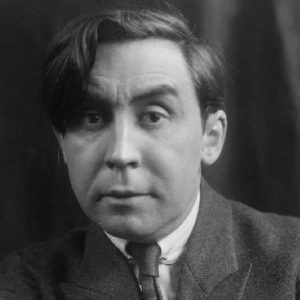 Built-in in Paris in 1881, Albert Gleizes trained as a fabric designer in his father's industrial design workshop. Nephew of the academic painter Léon Comerre, Gleizes started painting autodidact in 1901. In his beginning works Gleizes paired the Impressionist technique of Pissarro with density in composition used by the Neo-Impressionists.
Built-in in Paris in 1881, Albert Gleizes trained as a fabric designer in his father's industrial design workshop. Nephew of the academic painter Léon Comerre, Gleizes started painting autodidact in 1901. In his beginning works Gleizes paired the Impressionist technique of Pissarro with density in composition used by the Neo-Impressionists.
The discovery of the work of Paul Cézanne led Gleizes to paint in a proto-Cubist style.
Following a short period of experimenting with Fauvism around 1908, Gleizes found his phone calling in Cubism. During the summer of 1909, Gleizes sojourned in the Pyrenees where he pigmented in a simple linear way, akin to Henri Le Fauconnier. During 1910 Gleizes affirmed his Cubist style in the analytical decomposition of the subject and the employ of multiple viewpoints rendered in subdued colours. Gleizes participated in the 1911 'Salon des Indépendants' which later became known as the 'Cubist Scandal'. Gleizes' painting entitled 'Femme aux phlox' hung alongside Cubist works by his friends Henri le Fauconnier, Fernand Léger, Jean Metzinger and Robert Delaunay. It was the first time that the general public was confronted with Cubism — the work of Picasso and Braque was exhibited at Daniel-Henry Kahnweiler's gallery and was but known in select intellectual circles.
In 1912, Gleizes and Jean Metzinger published the movement'southward offset manifesto 'Du Cubisme'. It stated that the manner was developed from the utilize of successive simultaneous viewpoints to depict a subject. During the same yr, Gleizes exhibinformation technologyed at the 'Salon de la Section d'Or' his painting entitled 'Dépiquage des moissons' which demonstrated the painter's technical skill and understanding of Cubism whilst also heralding Brainchild.
At the outintermission of The Great War, Gleizes served at the front simply was called back in 1915. Gleizes took this opportunity to depart for New York. Here he frequented Marcel Duchamp and Francis Picabia and discovered in the rhythm of Jazz music an equivalent to his pictural researches. In 1916, Gleizes was in Barcelona to attend his first ane-man show. Upon his return to France in 1919, Gleizes designated much fourth dimension to teaching and to the pursuit of the theoretical research into his so-chosen 'tableaux-objets', using apartment colour planes in a geometric fashion. Gleizes alternated pure Abstract compositions with vague figuration.
In 1931, Gleizes joined the grouping 'Abstraction-Création' which defended international Abstract Art.
In 1937, Gleizes worked alongside Robert Delaunay, Fernand Léger and Léopold Survage on large murals for the Universal Exhibition. In 1938, Gleizes, Jacques Villion and Sonia Delaunay produced decorative panels for the 'Salon des Tuileries'. During the 1930's, Gleizes' Abstraction became imbued with increasing spirituality, sourced in Byzantine and medieval painting. In 1939, Gleizes settled in Saint-Rémy, Provence, surcirculared by his pupils. In 1947, Gleizes had a first retrospective exhibition in Lyon. Gleizes died in Avignon in 1953.
1863–1944
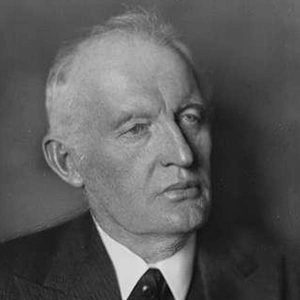 Born in 1863 in Normanner, Edvard Munch, first visited Paris in 1885. Having studied painting in his home country, the Parisian fine art scene with its radical Post-Impressionism movementments proved a formative experience which culminated in his 1886 painting entitled 'The Ill Child'. Depicting the impending expiry of his fifteen-yr old elder sister, Munch communitrue cated what was felt past the soul instead of what was seen past the heart, a mode which became known every bit Expressionism. Munch's early life experience of hurting and death turned his interest towards Symbolism for subject affair.
Born in 1863 in Normanner, Edvard Munch, first visited Paris in 1885. Having studied painting in his home country, the Parisian fine art scene with its radical Post-Impressionism movementments proved a formative experience which culminated in his 1886 painting entitled 'The Ill Child'. Depicting the impending expiry of his fifteen-yr old elder sister, Munch communitrue cated what was felt past the soul instead of what was seen past the heart, a mode which became known every bit Expressionism. Munch's early life experience of hurting and death turned his interest towards Symbolism for subject affair.
Munch returned to Paris for a two-twelvemonth scholartransport in 1889 and exhibinformation technologyed his 1884 painting 'Forenooning' at the Norwegian Pavilion of the Universal Exhibition. In Paris Munch tried the Pointillism technique also equally Synthetism developed by Paul Gauguin and the school of Pont-Aven. The simplification and stylisation of form to express subjects of Symbolism led him to limited his begetter's recent expiry in his painting entitled 'The Nighttime'.
Upon his return to Norway, Munch exhibited a series of paintings in 1892, which effected in an invitation to exhibit in Berlin at the Union of Berlin Artists November show. The browsedal and public outrage the exhibition caused, brought Munch instant fame. Munch set uptled in Berlin where he frequented the Scandinavian intellectual elite and indulged in a bohemian lifestyle.
In 1893, he exhibited six canvasses exploring the struggle between man and woman, entitled 'Written report for a Series: Dearest'. It was the genesis of a larger cycle called 'The Frieze of Life' bargaining with love, illness and death. Well-known works such as 'The Scream', 'Vampire', 'Angst' and 'Melancholy' vest to this group. All these pigmentings have their parallels in prints and drawings and lived prolonged lives through successive repetitions and reworkings.
The critics dubbed his work as 'Psychichi Realism'. Munch's Synthetism, which shows the influence of the Nabis, became his style of expressing his own psyche and subjects sourced in his ain life experiences.
In 1896, Munch returned to Paris, where he gave upwards pigmenting to dedicate fourth dimension to engraving and lithography. In 1898, Munch returned to Normanner, before undertaking a long trip through Europe in 1899. At the beginning of the 20th century, Munch produced a torso of large works in a more than decorative manner, influenced past the Gerhomo equivalent of 'Art Nouveau', known every bit 'Jugendstil'. Simultaneously his paintings showed the influence of the Nabis in general, and of Maurice Denis in particular. In 1902, Munch finally showed his completed 'Frieze of Life' in Berlin.
Munch spent the first decade of the new century moving restlessly between Belgium, The Underlands, Germany and Denmarker. A long-term sufferer from alcoholism and bouts of depression, Munch was on the verge of a total mental suspensiondown in 1908. He received care forment from the eminent Danish psychiatrist Dr. Daniel Jacobson, whose famous portrait he pigmented. Munch returned to Norway in 1909, and lastly readytled for a quieter life in the outskirts of Oslo in 1916.
Munch continued painting various subjects and became increasingly interested in photography and cinema, even producing experimental films.
Munch died of pneumonia aged eighty in his home in Norway in 1944. He left behind a monumental oeuvre including pigmentings, drawings, watercolours, prints, writings, photographs and cinematic films. In 1963, the urban center of Oslo inaugurated the Munch Museum.
Source: https://lauricefineart.com/en/periode/modern-art/
Post a Comment for "Rene Magritte What Teachers Taught Him at Royal Academy of Fine Arts of Brussels"